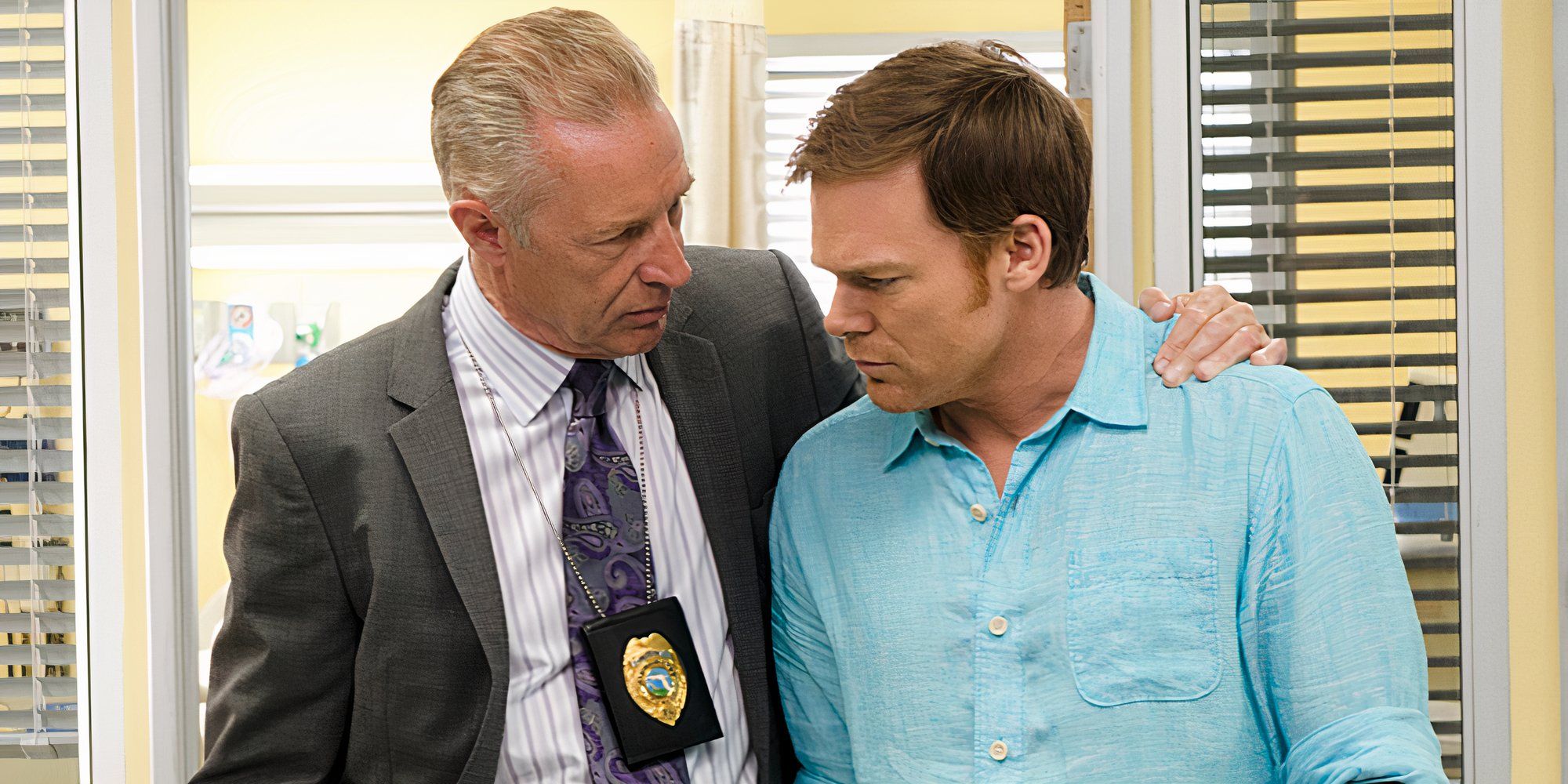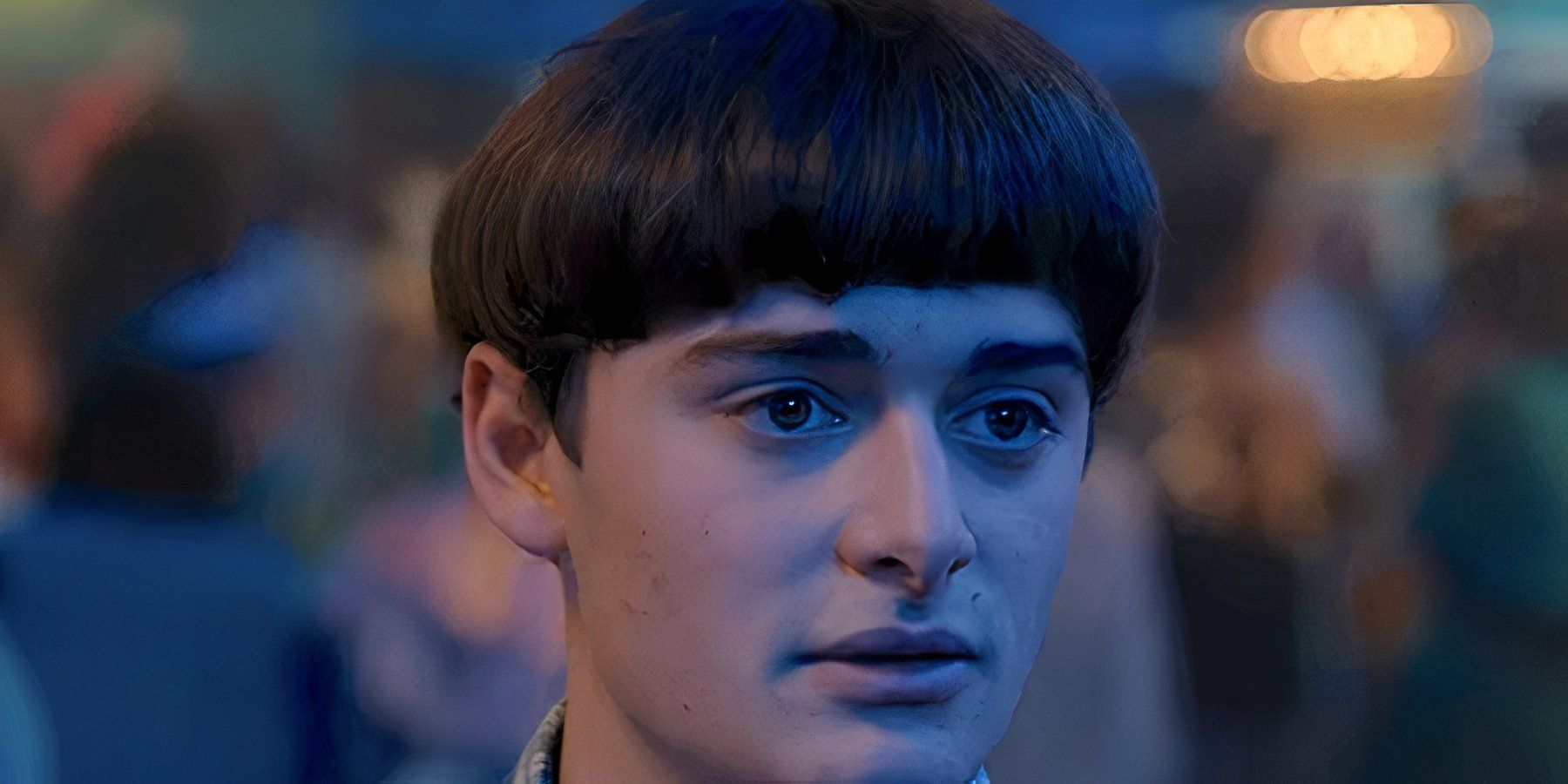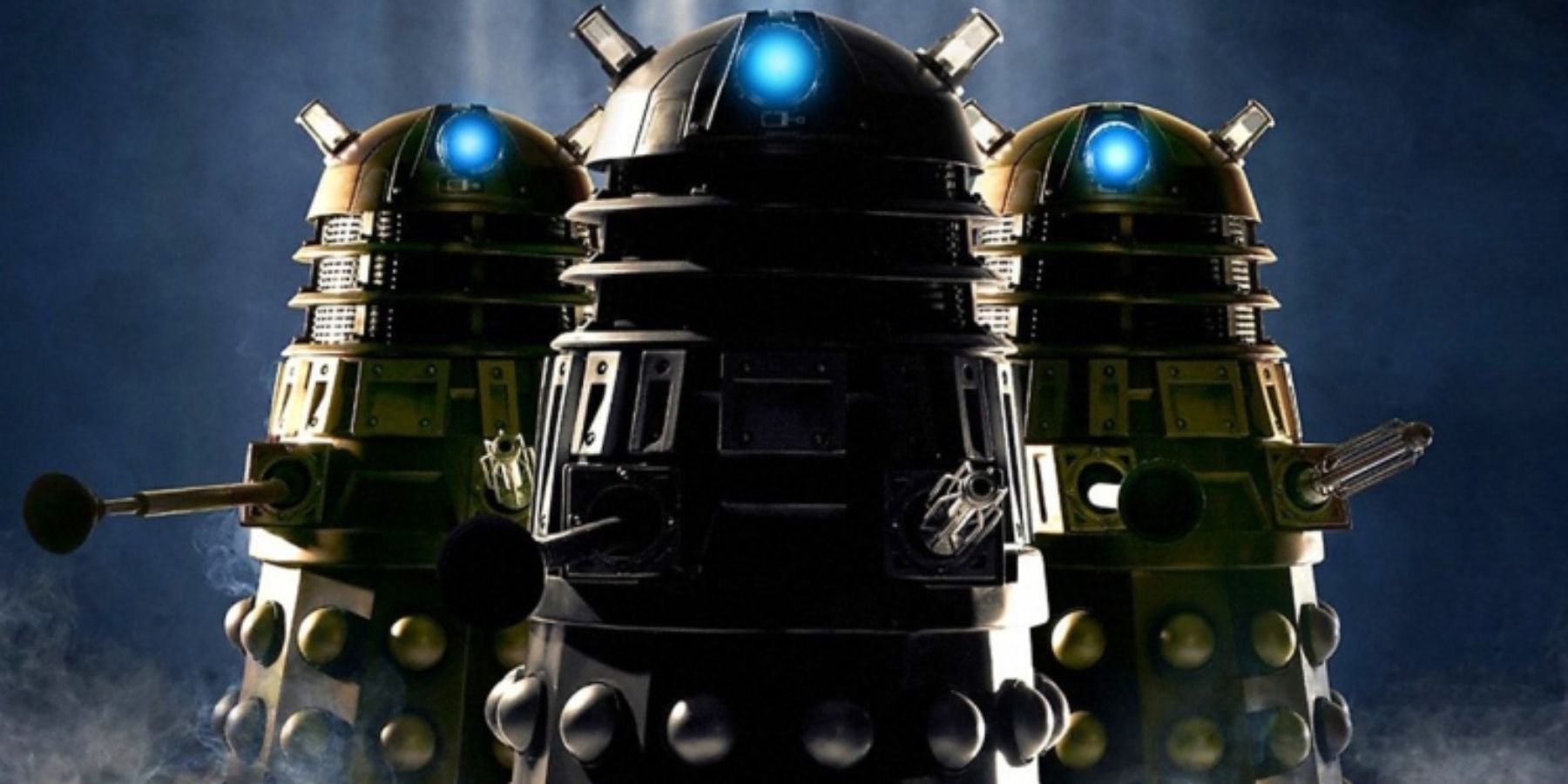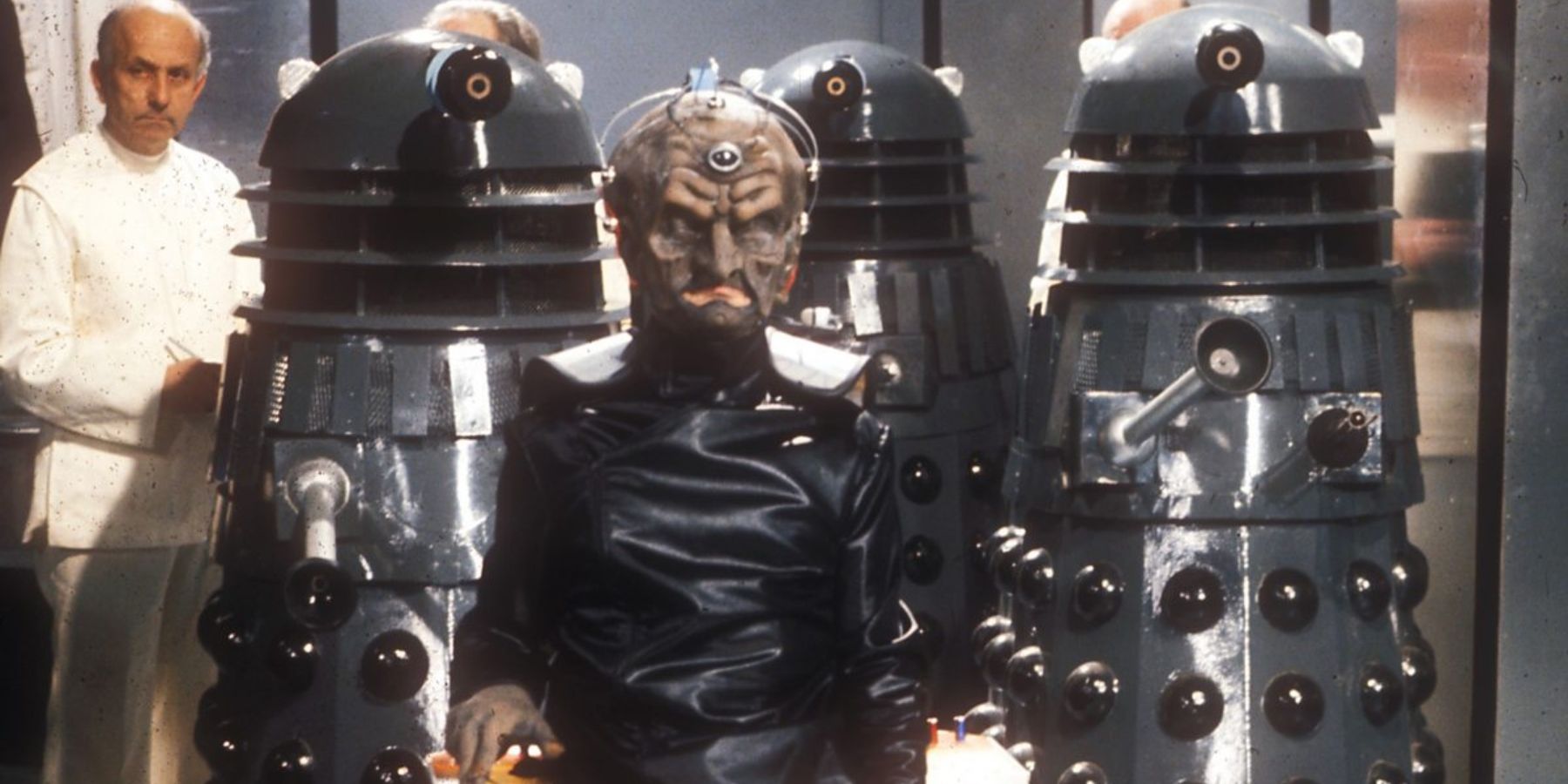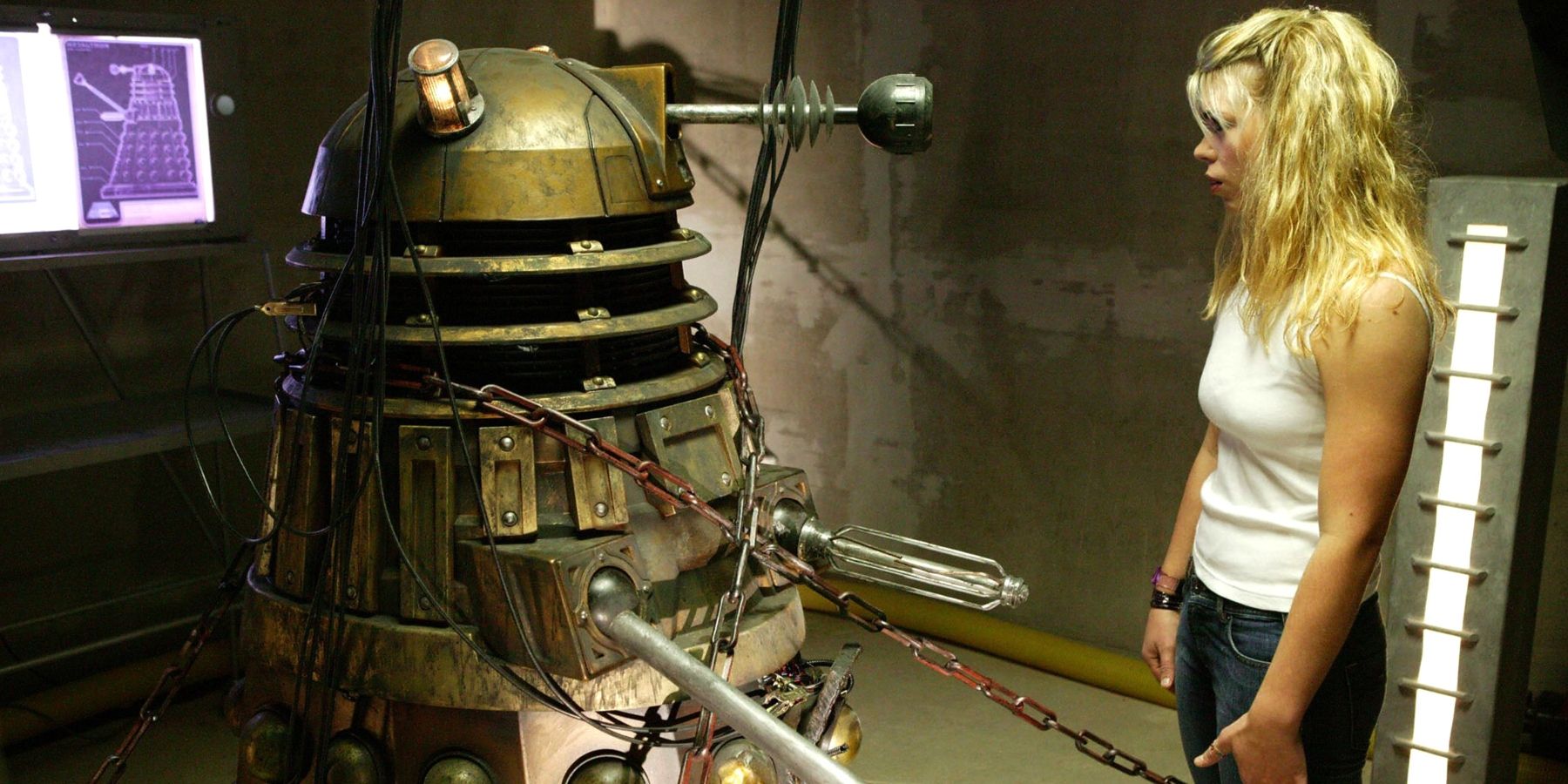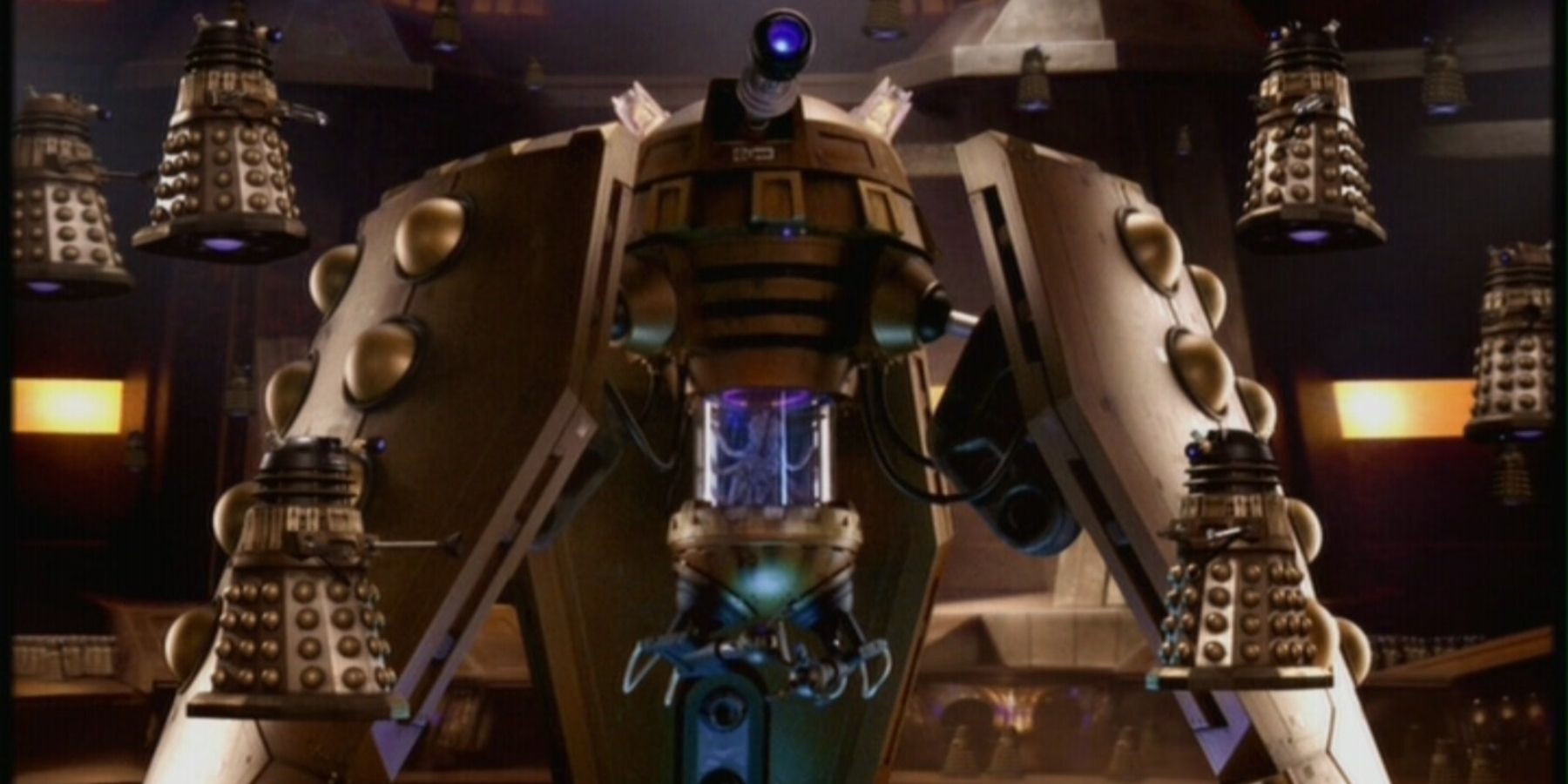Throughout its decades-long run, Doctor Who has seen no shortage of colorful monsters — the Cybermen, Sontarans, Silurians, and Weeping Angels to name a few — but none are quite so iconic as the species of warmongering mutant cyborgs known as the Daleks. They’re almost as old as Doctor Who itself, first appearing in the 1963 serial simply titled “The Daleks”, only the second storyline in the entire series.
Created by writer Terry Nation, the Daleks immediately struck a chord with viewers thanks to their memorable designs and screeching staccato voices. But though the Daleks may seem silly at first glance, their creation was rooted in a very serious fear — the threat of fascism, inspired by the Nazis’ attack on the UK just two decades prior to the Daleks’ creation. The Daleks were designed to be the ultimate symbol of hatred and oppression, and it shows in their characterization: they’re brutal authoritarian conquerors who seek to exterminate all non-Dalek life in the universe.
The Daleks’ supremacist ideology, totalitarian methods, and faceless uniformity make them the perfect thematic opposite for the Doctor’s kindhearted compassion, pacifistic values, and ever-changing face. But despite initially being presented as the greatest threat the Doctor had ever faced, the Daleks became less and less intimidating with every subsequent appearance. The Doctor and company thwarted their schemes with more and more ease every time, making the once-menacing villains feel like little more than a nuisance. This problem was temporarily mitigated by the introduction of Davros, the Daleks’ tyrannical creator, in the 1975 Fourth Doctor serial “Genesis of the Daleks”. However, this had the side effect of reducing the Daleks — once-powerful antagonists in their own right — to nothing more than subservient drones to their maker.
And so, when Doctor Who was revived from its 15-year hiatus (standalone TV movie, and non-canon books and audio dramas notwithstanding) in 2005, new showrunner Russell T Davies was tasked with recapturing the lost gravitas of the Daleks when plotting their highly-anticipated return to the series. And with the help of writer Robert Shearman, he did exactly that, thus creating “Dalek” — the sixth episode of Doctor Who Series 1. The episode begins with the Ninth Doctor (Christopher Eccleston) and his companion Rose Tyler (Billie Piper) being transported by the TARDIS to an underground American bunker in the then-future year of 2012. They soon realize that the facility is a museum of alien artifacts owned by the billionaire Henry Van Statten, self-proclaimed owner of the internet. Not long after, it’s revealed that the crown jewel of Van Statten’s collection is none other than the last living Dalek in the universe.
What follows is a look at the Doctor like he’s never been seen before. Usually calm and collected in every situation, the Doctor is terrified at the sight of the Dalek — but once he realizes the creature is too weak to attack, his fear turns to an equally uncharacteristic joy at another being’s suffering. The Doctor mocks the captive Dalek by revealing that he personally wiped out the rest of the Dalek species in the final battle of the Time War: an event that occurred offscreen between the classic and revived series, in which the Doctor’s homeworld of Gallifrey was destroyed along with his fellow Time Lords. Shocked and sorrowful at this revelation, the Dalek declares that it and the Doctor are the same: the last survivors of the most powerful races in history. However, this only sends the Doctor into a rage, causing him to torture the Dalek as it begs for mercy.
Even as it reveals that the Daleks are nearly extinct, the episode lends the iconic monsters a renewed importance by deepening their rivalry with the Doctor. In the classic series, the Doctor despised everything the Daleks stood for, but he had no hatred for the Daleks themselves — in “Genesis of the Daleks” he even refuses to prevent their creation, stating that no one has the right to wipe out an entire race. But in the new series, things are different. The Daleks have become the only beings in existence that the Doctor has no love or compassion for, a truly shocking sight for a character usually defined by his empathy. From now on, things are personal for the Doctor whenever the Daleks are involved.
Horrified by the Doctor’s uncharacteristic sadism, Rose takes pity on the seemingly helpless Dalek. However, a single touch from Rose allows the Dalek to absorb her DNA and repair its damage, restoring it to full power once again. From then on, the episode plays out more like a horror movie than the lighthearted sci-fi adventures typical to the series. The Dalek becomes an unstoppable killing machine, ruthlessly exterminating anyone and everyone in its way as it shows just what kind of destruction a single Dalek is capable of. But the Dalek’s true power isn’t as a physical threat, but an ideological one — its danger is so great that it nearly forces the Doctor to resort to murder.
But ultimately, it’s Rose who saves the day, not the Doctor. She convinces the Doctor to show mercy, reminding him of the principles he stands for. But when the Dalek attempts to kill Rose, it realizes that its assimilation of her DNA has made it part human, and thus impure by Dalek standards. Disgusted by its perceived imperfection, the Dalek chooses to self-destruct rather than give up its ideals — a grim reminder of the Daleks’ roots in real-world fascism and xenophobia. “Dalek” is still remembered as one of the best Doctor Who episodes to date, and for good reason: it perfectly captures everything great about the Doctor’s most iconic nemeses in a single self-contained story.
However, that wouldn’t be the end for the Daleks. The Series 1 finale, “The Parting of the Ways”, reveals that the Dalek Emperor escaped the end of the Time War, creating a new army in Earth’s distant future. While the episode is focused on the Doctor and Rose rather than the Daleks themselves, it still keeps them threatening by showing just what an apocalyptic threat a full Dalek armada is — bodies fall left and right, and entire continents are destroyed in mere minutes. The Doctor nearly compromises his beliefs once more to exterminate the Daleks, only for Rose to save him yet again.
But since then, the Daleks have never managed to recapture the menace they showed in Series 1. They’ve made at least one appearance in every successive series, whether as the ultimate masterminds of an overarching plot or as antagonists of a one-off episode. But every time, they manage to be less of a threat than they were in their last appearance. Even the Doctor seems to lose his grudge against the Daleks somewhere in his Eleventh incarnation, treating them as the minor annoyances they’d become. Throughout Steven Moffat’s time as showrunner, the Daleks appear less and less over time, until they’re mostly relegated to minor cameos — a tragic fate for the once-terrifying villains. However, with Russell T Davies set to return to Doctor Who in 2023, perhaps he can once again return the Daleks to their former glory.

